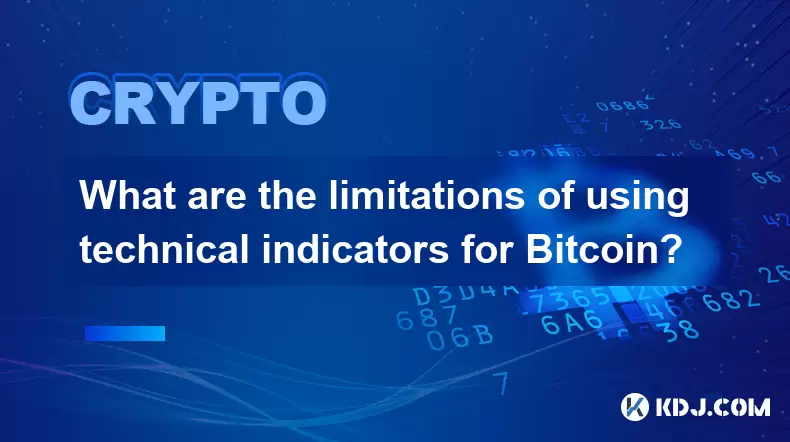-
 Bitcoin
Bitcoin $108,250.0992
0.11% -
 Ethereum
Ethereum $2,515.9404
0.03% -
 Tether USDt
Tether USDt $1.0003
0.00% -
 XRP
XRP $2.2166
-0.19% -
 BNB
BNB $656.5904
0.29% -
 Solana
Solana $147.4122
-0.58% -
 USDC
USDC $1.0000
-0.01% -
 TRON
TRON $0.2830
0.06% -
 Dogecoin
Dogecoin $0.1641
0.27% -
 Cardano
Cardano $0.5739
-0.19% -
 Hyperliquid
Hyperliquid $39.1463
-0.11% -
 Sui
Sui $2.8882
-0.02% -
 Bitcoin Cash
Bitcoin Cash $487.6428
0.31% -
 Chainlink
Chainlink $13.2097
0.07% -
 UNUS SED LEO
UNUS SED LEO $9.0308
0.10% -
 Avalanche
Avalanche $17.8608
0.13% -
 Stellar
Stellar $0.2379
-0.06% -
 Toncoin
Toncoin $2.7400
-0.39% -
 Shiba Inu
Shiba Inu $0.0...01144
-0.36% -
 Litecoin
Litecoin $87.5467
0.66% -
 Hedera
Hedera $0.1538
0.22% -
 Monero
Monero $315.5479
0.36% -
 Dai
Dai $1.0000
0.00% -
 Polkadot
Polkadot $3.3523
-0.71% -
 Ethena USDe
Ethena USDe $1.0003
0.01% -
 Bitget Token
Bitget Token $4.3960
-1.03% -
 Uniswap
Uniswap $7.2663
4.19% -
 Aave
Aave $272.8619
2.04% -
 Pepe
Pepe $0.0...09676
-0.18% -
 Pi
Pi $0.4586
-2.87%
How is the Bitcoin network secured?
Bitcoin's security relies on Proof-of-Work, decentralized nodes, and cryptographic hashing to prevent tampering and ensure transaction integrity.
Jul 06, 2025 at 12:42 am

Understanding the Core Principles Behind Bitcoin’s Security
The Bitcoin network is secured through a combination of cryptographic techniques, decentralized consensus mechanisms, and economic incentives. At its core, the security of the network relies on Proof-of-Work (PoW), which ensures that no single entity can control or manipulate transactions. Miners compete to solve complex mathematical puzzles using computational power, and once a block is validated, it is added to the blockchain in a way that makes altering past data nearly impossible.
One of the most important aspects of this system is the distributed ledger, which exists across thousands of nodes worldwide. Each node maintains a full copy of the blockchain and independently verifies every transaction. This redundancy means that even if some nodes are compromised, the majority must agree for any changes to be accepted.
This decentralized verification process prevents double-spending and ensures the integrity of all recorded transactions.
The Role of Cryptographic Hashing in Network Protection
Each block in the Bitcoin blockchain contains a unique digital fingerprint called a hash, created using the SHA-256 algorithm. This hash not only identifies the current block but also incorporates the hash of the previous block, forming a secure chain of information. Any attempt to alter a transaction within a block would change its hash, immediately alerting the network to potential tampering.
Additionally, Merkle trees are used to summarize and verify all transactions in a block efficiently. By creating a hierarchical structure of hashes, the Merkle root allows for quick validation without needing to check each individual transaction. This mechanism enhances efficiency while maintaining strong security standards.
- Hashes provide immutability by linking blocks together
- Merkle roots enable efficient transaction verification
- Any alteration breaks the chain and is rejected by the network
Decentralization as a Defense Mechanism
A key factor in the security of the Bitcoin network is its decentralized nature. Unlike traditional financial systems that rely on centralized authorities, Bitcoin operates on a peer-to-peer network where no single participant has control over the entire system. This decentralization makes it extremely difficult for malicious actors to launch successful attacks.
To compromise the network, an attacker would need to control more than 50% of the total mining power — known as a 51% attack. Given the immense computational resources required and the widespread distribution of miners globally, such an attack remains highly improbable.
Furthermore, nodes play a critical role in enforcing protocol rules. If a miner attempts to validate an invalid block, honest nodes will reject it, ensuring that only legitimate transactions are accepted into the blockchain.
Economic Incentives That Reinforce Network Integrity
Miners are financially motivated to act honestly due to the block reward and transaction fees they receive for validating new blocks. Attempting to cheat the system would result in wasted resources and loss of income, making honest participation more profitable in the long run.
The cost of launching an attack on the network far outweighs any potential gains. Since attackers would need to invest heavily in hardware and electricity, and still face rejection from the network, there is little incentive to attempt manipulation.
These economic disincentives make Bitcoin's security model robust against internal threats.
Moreover, the predictable issuance schedule of Bitcoin, including events like halvings, helps maintain miner participation and network stability. As the supply becomes scarcer over time, the value of Bitcoin may increase, further reinforcing the economic incentives for miners to behave honestly.
Wallet Security and User-Level Protections
While the Bitcoin network itself is highly secure, user-level security depends on how individuals store and manage their private keys. Wallets come in various forms — software, hardware, paper, and mobile — each with different levels of protection against theft or loss.
For maximum security, users should employ best practices such as:
- Using hardware wallets to store large amounts offline
- Enabling multi-signature authentication for additional layers of security
- Storing recovery phrases securely, ideally offline and in multiple locations
- Avoiding phishing attempts and using trusted wallet providers
It is crucial to understand that losing access to private keys results in permanent loss of funds, as there is no central authority to recover them. Therefore, securing one's own wallet is just as vital as the underlying network security.
Frequently Asked Questions
What happens if someone tries to hack the Bitcoin network?
If an attacker attempts to modify transaction data, the decentralized nodes will reject the altered block due to mismatched hashes. Additionally, the sheer amount of computing power required to override the network makes such an attack economically unfeasible.
Can quantum computing threaten Bitcoin’s security?
While theoretical concerns exist about quantum computers breaking cryptographic algorithms, current Bitcoin infrastructure and wallet technologies are exploring post-quantum cryptographic solutions to mitigate future risks.
Is it possible for Bitcoin to become insecure in the future?
As long as the network maintains sufficient decentralization and mining power remains distributed, Bitcoin's fundamental security remains intact. Ongoing development and upgrades also help address emerging threats.
How does Bitcoin prevent double-spending?
Double-spending is prevented through the consensus mechanism. Once a transaction is confirmed and added to a block, it becomes part of the immutable record. Nodes validate all transactions before acceptance, ensuring that coins cannot be spent more than once.
Disclaimer:info@kdj.com
The information provided is not trading advice. kdj.com does not assume any responsibility for any investments made based on the information provided in this article. Cryptocurrencies are highly volatile and it is highly recommended that you invest with caution after thorough research!
If you believe that the content used on this website infringes your copyright, please contact us immediately (info@kdj.com) and we will delete it promptly.
- Ruvi AI: The Avalanche of Returns Crashing into the Crypto Scene
- 2025-07-06 08:30:13
- XRP's Wild Ride: Is a Parabolic Bull Run on the Horizon?
- 2025-07-06 08:30:13
- Bitcoin, Suspicion, and Billions: Decoding the Crypto Whale Moves
- 2025-07-06 08:50:13
- Bitcoin's Price Discovery Quest: Rally Structure Under the Microscope
- 2025-07-06 08:50:13
- Dogecoin, Ripple, and the Banking License Quest: What's the Hype?
- 2025-07-06 09:10:12
- Bitcoin, Billion Dollars, and Suspicion: A Crypto Conundrum
- 2025-07-06 09:10:12
Related knowledge

What is the Woodies CCI indicator and can it be used for Bitcoin?
Jul 04,2025 at 05:14pm
Understanding the Woodies CCI IndicatorThe Woodies CCI indicator is a variation of the traditional Commodity Channel Index (CCI), which was originally developed by Donald Lambert. The standard CCI measures the current price level relative to an average price over a given period, typically 14. However, the Woodies version modifies this calculation to mak...

How to use indicators to trade the opening range breakout for Bitcoin CME futures?
Jul 05,2025 at 07:35pm
What Is the Opening Range Breakout Strategy?The opening range breakout (ORB) strategy is a popular trading technique used in both traditional markets and cryptocurrency futures, particularly for Bitcoin on the CME. This method involves identifying a specific price range formed during the early phase of a trading session and then taking positions when th...

What does a bearish cross on the Stochastic RSI mean for Bitcoin?
Jul 05,2025 at 07:18pm
Understanding the Stochastic RSI IndicatorThe Stochastic RSI (Relative Strength Index) is a momentum oscillator used in technical analysis to identify overbought or oversold conditions in an asset's price. It combines two well-known indicators — the RSI and the Stochastic Oscillator — to provide more nuanced signals than either could alone. The Stochast...

What are the limitations of using technical indicators for Bitcoin?
Jul 06,2025 at 03:35am
Understanding the Role of Technical Indicators in Cryptocurrency TradingIn the realm of Bitcoin trading, technical indicators are tools used by traders to analyze historical price data and volume to predict future price movements. These indicators—such as Moving Averages, Relative Strength Index (RSI), and MACD—are widely adopted across traditional fina...

How to use the historical volatility indicator for Bitcoin options trading?
Jul 06,2025 at 04:14am
Understanding the Historical Volatility IndicatorThe historical volatility indicator (HV) is a statistical measure used to assess the price fluctuations of an asset over a specific time period. In the context of Bitcoin options trading, this metric helps traders evaluate past price movements to anticipate potential future swings. Unlike implied volatili...

How to interpret the interaction between Bitcoin's price and the Ichimoku baseline (Kijun-sen)?
Jul 05,2025 at 11:42pm
Understanding the Ichimoku Baseline (Kijun-sen) in Technical AnalysisThe Ichimoku Cloud, also known as Ichimoku Kinko Hyo, is a comprehensive technical analysis tool that provides insights into momentum, trend direction, and potential support/resistance levels. Within this system, the Kijun-sen, or baseline, plays a crucial role. It is calculated by ave...

What is the Woodies CCI indicator and can it be used for Bitcoin?
Jul 04,2025 at 05:14pm
Understanding the Woodies CCI IndicatorThe Woodies CCI indicator is a variation of the traditional Commodity Channel Index (CCI), which was originally developed by Donald Lambert. The standard CCI measures the current price level relative to an average price over a given period, typically 14. However, the Woodies version modifies this calculation to mak...

How to use indicators to trade the opening range breakout for Bitcoin CME futures?
Jul 05,2025 at 07:35pm
What Is the Opening Range Breakout Strategy?The opening range breakout (ORB) strategy is a popular trading technique used in both traditional markets and cryptocurrency futures, particularly for Bitcoin on the CME. This method involves identifying a specific price range formed during the early phase of a trading session and then taking positions when th...

What does a bearish cross on the Stochastic RSI mean for Bitcoin?
Jul 05,2025 at 07:18pm
Understanding the Stochastic RSI IndicatorThe Stochastic RSI (Relative Strength Index) is a momentum oscillator used in technical analysis to identify overbought or oversold conditions in an asset's price. It combines two well-known indicators — the RSI and the Stochastic Oscillator — to provide more nuanced signals than either could alone. The Stochast...

What are the limitations of using technical indicators for Bitcoin?
Jul 06,2025 at 03:35am
Understanding the Role of Technical Indicators in Cryptocurrency TradingIn the realm of Bitcoin trading, technical indicators are tools used by traders to analyze historical price data and volume to predict future price movements. These indicators—such as Moving Averages, Relative Strength Index (RSI), and MACD—are widely adopted across traditional fina...

How to use the historical volatility indicator for Bitcoin options trading?
Jul 06,2025 at 04:14am
Understanding the Historical Volatility IndicatorThe historical volatility indicator (HV) is a statistical measure used to assess the price fluctuations of an asset over a specific time period. In the context of Bitcoin options trading, this metric helps traders evaluate past price movements to anticipate potential future swings. Unlike implied volatili...

How to interpret the interaction between Bitcoin's price and the Ichimoku baseline (Kijun-sen)?
Jul 05,2025 at 11:42pm
Understanding the Ichimoku Baseline (Kijun-sen) in Technical AnalysisThe Ichimoku Cloud, also known as Ichimoku Kinko Hyo, is a comprehensive technical analysis tool that provides insights into momentum, trend direction, and potential support/resistance levels. Within this system, the Kijun-sen, or baseline, plays a crucial role. It is calculated by ave...
See all articles

























































































